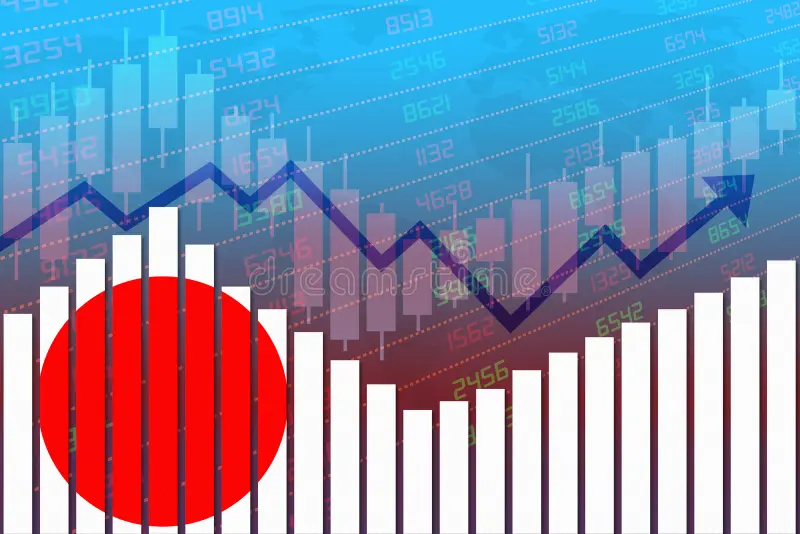Japan’s Economic Growth Rebounds in Q3 2024, Driven by Consumer Spending and Weak Yen

Japan’s economy saw a notable rebound in the third quarter of 2024, with GDP growth exceeding forecasts. The recovery was largely driven by an increase in consumer spending and a weak yen, which has boosted the competitiveness of Japanese exports. The economic resurgence comes after a challenging period marked by global inflation, supply chain disruptions, and sluggish domestic demand.
The government’s stimulus measures, combined with strong performance in key industries, have bolstered growth, offering some optimism that Japan’s economy is gaining momentum after years of stagnation and deflationary pressures.
Consumer Spending Leads the Charge
One of the primary drivers of Japan’s economic resurgence has been a resurgence in consumer spending. Following the lifting of COVID-19-related restrictions and a steady increase in employment, Japanese consumers have started to spend more on goods and services, from retail products to travel. Tourism, which was significantly impacted during the pandemic, has rebounded as international travel restrictions have eased, with inbound tourism contributing significantly to the economy.
Domestic demand has also been bolstered by a series of stimulus measures implemented by the Japanese government. These measures included cash handouts, tax incentives, and subsidies aimed at encouraging both households and businesses to spend more. Additionally, wage growth in some sectors has improved, helping to boost household income and spending power.
A Weak Yen Bolsters Exports
The depreciation of the Japanese yen has played a crucial role in the country’s economic recovery. A weaker yen has made Japanese goods and services more affordable for foreign buyers, boosting demand for the country’s exports. Key export sectors, including automobiles, electronics, and machinery, have seen significant increases in overseas orders, particularly from the U.S. and Europe.
Japan’s major car manufacturers, such as Toyota and Honda, have benefited from the weaker yen, as their products have become more competitively priced in global markets. Japanese electronics and tech firms have similarly experienced increased demand for their products, helping to stabilize their earnings amid challenging market conditions.
The yen’s depreciation has also encouraged more foreign tourists to visit Japan, further boosting consumer spending in the tourism and hospitality sectors. The influx of foreign visitors, combined with higher demand for Japanese products abroad, has provided a significant tailwind to the economy.
Government Stimulus and Policy Support
The Japanese government has been proactive in supporting the economic recovery through various fiscal and monetary measures. The Bank of Japan has maintained its ultra-loose monetary policy, keeping interest rates low and continuing its massive asset purchase program. This has helped to stabilize financial markets and keep borrowing costs low, encouraging investment and spending.
Additionally, the government has rolled out several stimulus packages aimed at supporting businesses and households, particularly in sectors hardest hit by the pandemic. These measures have included subsidies for small and medium-sized enterprises (SMEs), tax breaks, and increased spending on infrastructure projects to create jobs and stimulate economic activity.
Prime Minister Fumio Kishida has also emphasized the importance of structural reforms to ensure long-term economic growth. His administration has introduced policies aimed at improving labor market flexibility, boosting innovation in key industries such as technology and green energy, and enhancing the country’s competitiveness on the global stage.
Challenges Remain
Despite the positive economic data, challenges remain for Japan’s long-term recovery. The weak yen, while beneficial for exports, has increased the cost of imports, particularly energy and raw materials. This has contributed to rising inflation, which, while still moderate compared to other countries, is putting pressure on household budgets and could dampen consumer spending if it persists.
Japan also faces demographic challenges, including an aging population and declining workforce, which have long been a drag on the country’s economic growth. Without meaningful reforms to address these issues, such as encouraging greater workforce participation among women and older workers, Japan’s potential for sustained long-term growth could be limited.
Moreover, global economic uncertainty, including concerns over slowing growth in major trading partners such as China and Europe, could pose risks to Japan’s export-driven recovery. Geopolitical tensions, including the ongoing war in Ukraine and trade disputes between the U.S. and China, could further disrupt global supply chains and dampen demand for Japanese goods.
A Promising Outlook
Overall, Japan’s Q3 2024 economic rebound offers promising signs that the country is on a path to recovery. With strong consumer spending, a boost from exports due to the weak yen, and continued government support, Japan’s economy appears to be gaining traction after years of stagnation.
However, sustaining this growth will require careful management of inflationary pressures, continued stimulus measures, and addressing long-standing structural challenges. If Japan can navigate these issues effectively, it may be well-positioned for stronger economic growth in the years ahead.



